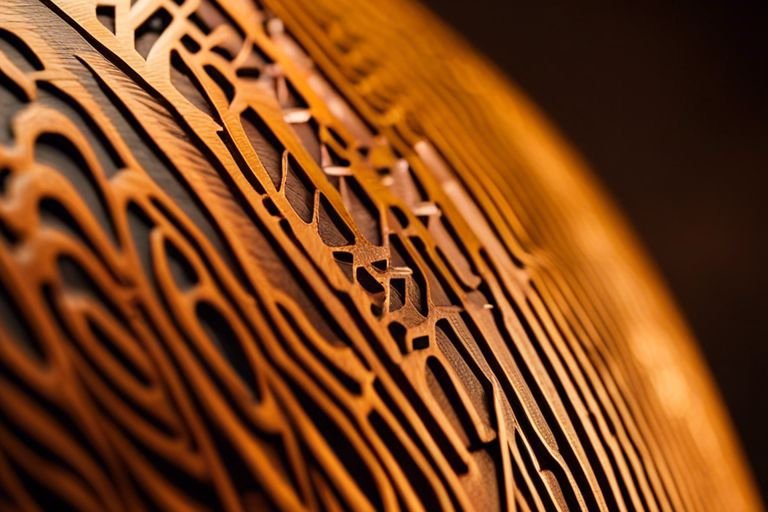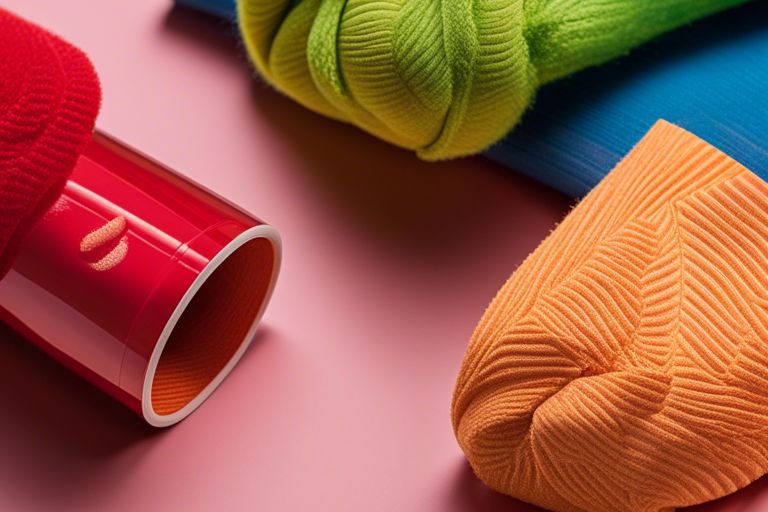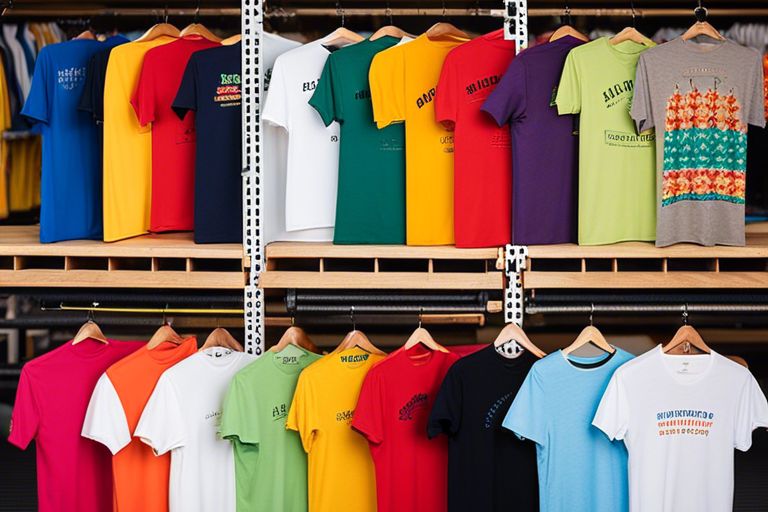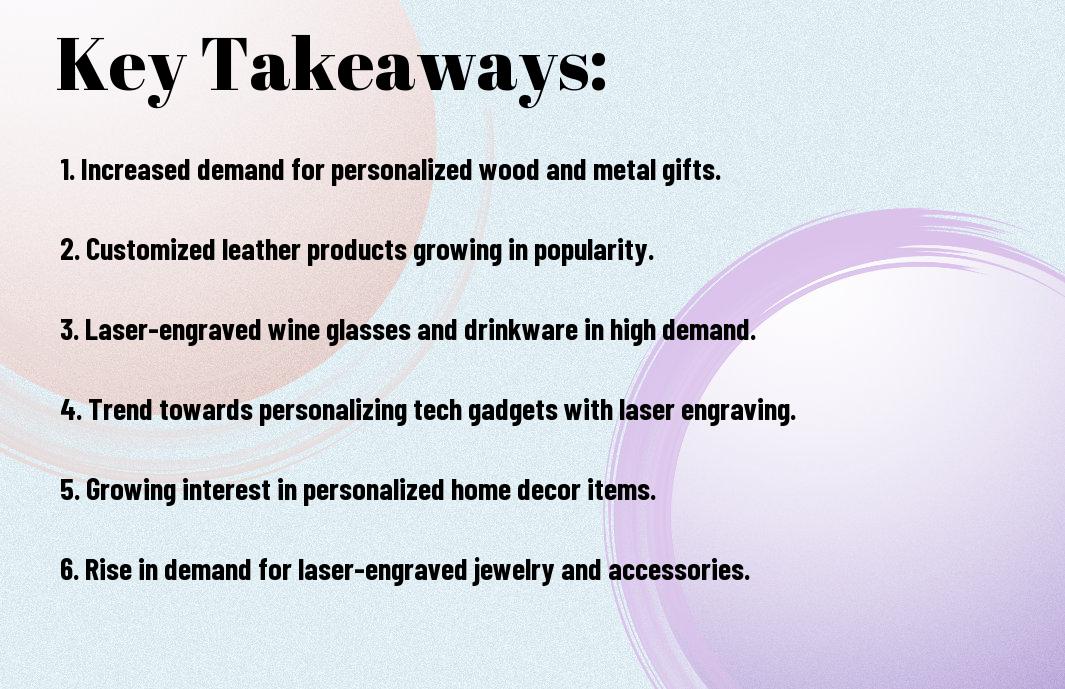Can laser engraving be used on different materials, like metal or wood?
Intriguingly, laser engraving can be utilized on a variety of materials, including metal and wood. This innovative technology has revolutionized the way we personalize and customize products, offering precise and high-quality results that were previously difficult to achieve through traditional methods. If you have been wondering whether laser engraving is suitable for the materials you work with, the answer is a resounding yes. Laser engraving is a versatile technique that can be applied to a wide range of materials, from stainless steel and aluminum to hardwood and plywood. The precision and accuracy of laser engraving make it a popular choice for creating intricate designs and detailed markings on various surfaces. Whether you want to add a personalized message to a piece of jewelry, engrave a company logo onto metal hardware, or create intricate patterns on wooden plaques, laser engraving offers a durable and professional-looking solution.
Fundamentals of Laser Engraving
One of the most precise and efficient methods of marking materials, laser engraving has become increasingly popular in various industries. This technology uses a high-powered laser to remove the surface material of an object, creating a permanent mark that is highly resistant to wear and tear.
The Laser Engraving Process
When it comes to laser engraving, the process involves focusing a high-powered laser beam onto the surface of the material to be engraved. The intense heat generated by the laser vaporizes or removes the material, leaving a cavity that forms the desired mark. This process is highly precise and can produce intricate designs with exceptional accuracy.
Types of Lasers Used
There are several types of lasers that can be used for engraving, each with its own set of advantages and applications. The most commonly used lasers for engraving are CO2 lasers and fiber lasers.
- CO2 lasers: These are best suited for organic materials such as wood, glass, and plastics. They operate at a wavelength of 10.6 micrometers and are highly efficient for engraving or cutting.
- Fiber lasers: These lasers are ideal for marking metals and hard plastics. They operate at a wavelength of 1.06 micrometers and are known for their high precision and speed.
Perceiving the characteristics of each type of laser will help you determine the best option for your specific engraving needs.
Laser Engraving on Metal
Assuming you are looking to explore the possibility of laser engraving on different materials, metal is one of the most popular choices. Laser engraving on metal can produce high-quality, precise and permanent markings that are highly resistant to fading, wear, and corrosion. This makes it an ideal choice for various industrial and artistic applications.
Adaptations for Metal Engraving
When it comes to laser engraving on metal, there are some adaptations that need to be made to ensure the best results. Metal is a highly reflective material, so you will need to use a lower frequency laser with higher power to effectively mark the surface. Additionally, you may need to use a specialized coating or marking spray to enhance the contrast and visibility of the engraving on certain types of metal.
Common Metals for Laser Engraving
There are several common metals that are suitable for laser engraving, including stainless steel, aluminum, brass, copper, and titanium. Each of these metals has its own unique properties and characteristics, so the engraving process may need to be adjusted accordingly. For example, stainless steel requires a higher power laser to create a deep and lasting engraving, while aluminum may produce a contrasting mark with a lower power laser.
Industrial and Artistic Applications
When it comes to industrial applications, laser engraving on metal is commonly used for part marking, identification tags, serial numbers, and branding purposes. The permanent and highly precise nature of laser engraving makes it an ideal choice for these applications. On the artistic side, laser engraving on metal is used to create intricate designs, personalized gifts, and custom jewelry. The ability to engrave detailed designs and patterns on metal opens up a whole new world of creative possibilities.
Challenges and Solutions
One of the main challenges when laser engraving on metal is the potential for heat-affected zones and recast material that can alter the appearance of the engraving. To overcome this, you can utilize techniques such as air or nitrogen assist gas to minimize heat distortion and ensure a clean finish. Additionally, using the correct laser parameters and engraving settings for the specific type of metal can help to minimize these challenges and ensure a high-quality result.
Laser Engraving on Wood
To answer your question, yes, laser engraving can be done on wood. In fact, wood is one of the most popular materials for laser engraving due to its versatility and natural beauty. Whether you are looking to personalize a wooden item or create intricate designs, laser engraving on wood can achieve stunning results.
Wood Types and Their Engraving Characteristics
When it comes to laser engraving on wood, different wood types will produce varying results. Hardwoods such as oak, cherry, and walnut are ideal for detailed engravings and produce darker, more defined marks. On the other hand, softwoods like pine and cedar tend to create lighter engravings with a rustic appearance. Bamboo, a type of grass, offers a unique look with fine, clean lines, making it a popular choice for eco-friendly designs. Keep in mind that the moisture content of the wood can also affect engraving results. Wood with lower moisture content is generally more suitable for laser engraving.
- Hardwoods such as oak, cherry, and walnut produce darker, more defined marks
- Softwoods like pine and cedar create lighter engravings with a rustic appearance
- Bamboo offers a unique look with fine, clean lines
- Moisture content of the wood can affect engraving results
- Wood with lower moisture content is more suitable for laser engraving
Though each wood type has its own engraving characteristics, you can achieve remarkable results with any type of wood by adjusting the laser engraving settings to suit the specific wood type you are working with.
Techniques for Wood Engraving
When it comes to laser engraving on wood, there are several techniques that can be utilized to achieve different results. From engraving intricate designs to creating different depths of engraving, adjusting the speed, power, and resolution of the laser can help you achieve the desired effect. Certain techniques such as dithering and vector cutting can also be used to create a range of textures and details on the wood surface.
Preserving Engraved Wood
Once you have successfully engraved a piece of wood, it is important to preserve the engraving to ensure its longevity. Applying a clear finish or sealant can protect the engraved wood from environmental elements and prevent the engravings from fading or wearing out over time. Additionally, storing the engraved wood in a cool, dry place can help maintain its appearance for years to come.
Creative Uses of Wood Engraving
Now that you understand the process of laser engraving on wood, you can explore the creative possibilities it offers. From custom wooden signs and plaques to intricate wooden artwork and personalized gifts, the versatility of wood engraving allows you to express your creativity and bring your designs to life.
Laser Engraving on Other Materials
Now that we've covered the basics of laser engraving on metal and wood, let's explore the possibilities of utilizing laser engraving on other materials. Laser engraving technology has advanced to the point that it can be used on a variety of materials, providing you with a wide range of options for your projects. In this chapter, we will delve into the potential of laser engraving on glass, plastic and acrylic, as well as leather and textiles.
Engraving on Glass
Laser engraving on glass can produce stunning results, offering precise and intricate designs. Whether you are personalizing glassware, creating intricate art pieces, or etching logos onto glass surfaces, laser engraving allows you to achieve high-quality results. The ability to create fine, detailed designs on glass surfaces makes laser engraving a popular choice for a wide range of applications, including home decor, promotional items, and personalized gifts.
When laser engraving on glass, it's important to note that the process can be delicate. The intense heat generated by the laser can cause the glass to crack or shatter if not handled properly. It's essential to use the right settings and techniques to achieve the desired results without compromising the integrity of the glass. However, with the right precautions and expertise, laser engraving can be a highly effective method for etching designs onto glass surfaces.
Engraving on Plastic and Acrylic
Laser engraving on plastic and acrylic offers a versatile and durable option for creating custom designs. Whether you are engraving signage, creating personalized awards, or adding intricate details to plastic or acrylic products, the precision of laser engraving allows you to achieve sharp, clean results. The ability to produce detailed designs on plastic and acrylic surfaces makes laser engraving a popular choice for a variety of applications, including industrial labeling, signage, and promotional items.
It's important to note that when engraving on plastic and acrylic, the laser must be used with caution. The heat generated by the laser can cause the material to melt, produce fumes, or release toxic gases if not properly ventilated. However, with the right safety measures and expertise, laser engraving on plastic and acrylic can produce impressive results while maintaining the integrity of the material.

Engraving on Leather and Textiles
Laser engraving on leather and textiles allows you to personalize and customize a wide range of products. Whether you are creating custom leather accessories, embellishing clothing, or adding intricate designs to textiles, laser engraving offers a precise and efficient method for achieving high-quality results. The ability to engrave intricate designs on leather and textiles makes laser technology a popular choice for customizing fashion, accessories, and upholstery.
One benefit of laser engraving on leather and textiles is the precision and accuracy it provides. Whether you are etching logos, adding texture, or creating patterns, the laser allows for detailed and consistent results. However, it's important to note that the process can produce a strong, burnt odor and should be carried out in a well-ventilated area. Additionally, certain types of leather and textiles may require specific settings and techniques to achieve optimal results, so expertise and attention to detail are essential when working with these materials.
Considerations for Material-Specific Engraving
Despite the versatility of laser engraving, it’s important to note that different materials may require specific considerations for optimal results. To ensure successful laser engraving on various materials such as metal or wood, it’s crucial to understand the unique characteristics and properties of each material. For an in-depth understanding of laser engraving on different materials, you can refer to the Laser Engraving Guide.
Choosing the Right Laser Settings
When working with different materials, it’s essential to adjust the laser settings accordingly to achieve the desired engraving results. Certain materials may require specific power levels, speed, and frequency settings to ensure optimal engraving depth, precision, and quality. For example, engraving on metal may require different laser settings compared to engraving on wood. It’s important to experiment with various settings to determine the ideal parameters for each material.
Material Preparation
Proper material preparation is critical for successful laser engraving. For metal engraving, you may need to apply a coating or use specific metal alloys to ensure clean and precise engraving. Wood may require sanding and varnishing to achieve optimal results. Additionally, ensuring that the material is securely positioned and flat is crucial to avoid any potential errors during the engraving process. Understanding the specific requirements for each material is essential for achieving high-quality engravings.

Post-Engraving Treatment and Finish
After the engraving process, it’s important to consider post-engraving treatment and finish to enhance the overall appearance and durability of the engraving. For metal engraving, you may need to use specialized techniques such as passivation or chemical etching to protect the engraved surface from corrosion. Wood engraving may require sanding and staining to bring out the details of the engraving. Regardless of the material, applying a protective finish can prolong the life and visual impact of the engraving.
Safety and Environmental Concerns
For all to know about laser engraving and cutting on different materials, it's important to understand the safety and environmental concerns involved. While laser engraving is a useful and versatile method for creating intricate and precise designs on various materials, it is crucial to be aware of the potential safety hazards and environmental impact associated with the process. In this section, we will discuss the necessary safety procedures, environmental considerations, and proper disposal of engraving byproducts.
Laser Safety Procedures
When working with laser engraving machines, it is essential to prioritize safety measures to protect yourself and those around you. Be sure to wear appropriate personal protective equipment, such as safety glasses and gloves, to shield yourself from potential hazards. Additionally, it is important to follow all manufacturer guidelines for operating the laser machine and to be knowledgeable about the specific safety precautions for the materials you are engraving. All to Know About Laser Engraving and Cutting Different Materials
Environmental Impact and Material Considerations
While laser engraving is a precise and efficient method, it is important to consider the environmental impact of the process. Certain materials used in laser engraving, such as plastics, can release harmful fumes when cut or engraved. It is crucial to properly ventilate the workspace and use materials that are safe for laser processing. Additionally, consider the sustainability and recyclability of the materials you choose to engrave to minimize environmental impact. Choosing environmentally friendly materials and implementing proper ventilation are key considerations for reducing the environmental impact of laser engraving.
Safe Disposal of Engraving Byproducts
After completing an engraving project, it is important to properly dispose of any byproducts, such as dust, debris, or leftover materials. Depending on the materials used, these byproducts may have specific disposal requirements to ensure environmental safety. Be sure to familiarize yourself with the proper disposal methods for the materials you are working with and follow all local regulations for waste management. It is your responsibility to safely dispose of engraving byproducts to prevent environmental harm and maintain workspace cleanliness.
Advances and Future Directions in Laser Engraving
Your curiosity about the future of laser engraving technology and its potential for innovation and growth is well-founded. As the demand for customization and personalization continues to rise, laser engraving companies are investing in advanced technologies and exploring new materials to meet the evolving needs of consumers and industries. In this section, we will discuss some of the advances and future directions in laser engraving that you should keep an eye on.
Innovative Technologies and Materials
One of the most exciting developments in laser engraving is the emergence of innovative technologies that have expanded the range of materials that can be engraved. With the introduction of advanced laser systems, including fiber lasers and ultrafast lasers, it is now possible to engrave on a wider variety of materials, including metals, plastics, ceramics, and even organic materials like wood and leather. These cutting-edge technologies have not only improved the precision and speed of engraving but have also unlocked new possibilities for creating intricate designs and patterns on diverse surfaces. Additionally, the integration of automation and artificial intelligence has enhanced the efficiency and accuracy of laser engraving systems, paving the way for more complex and dynamic engraving applications.
Trends in Customization and Personalization
As consumer preferences shift towards personalized and customized products, laser engraving is playing a pivotal role in fulfilling these demands. From personalized gifts and promotional items to bespoke industrial components and architectural features, the trend of customization and personalization is gaining momentum across various sectors. Laser engraving technology enables you to add individualized text, logos, graphics, or decorative patterns to a wide range of products, thereby enhancing their value and appeal. Moreover, the integration of digital design software and 3D engraving capabilities has opened up new avenues for creating unique and personalized products that resonate with diverse consumer tastes and preferences.
Predictions for the Evolution of Laser Engraving
Looking ahead, the evolution of laser engraving is likely to be shaped by advancements in nanotechnology, 3D printing, and other additive manufacturing techniques. The integration of these technologies with laser engraving holds the promise of revolutionizing the production of complex and customized objects with unprecedented precision and detail. Furthermore, the development of environmentally sustainable laser engraving processes and the use of biodegradable or recyclable materials are anticipated to align with the global shift towards eco-friendly practices. The future of laser engraving holds enormous potential for expanding its applications across diverse industries, from healthcare and aerospace to fashion and art, thereby opening up new possibilities for creative expression and industrial innovation.
Conclusion
From above, you can see that laser engraving can be used on a variety of materials, including metal and wood. The precision and versatility of laser engraving technology make it a great option for adding detailed designs and information to different types of surfaces. Whether you are looking to personalize a metal item like a bracelet or engrave a design onto a wooden plaque, laser engraving offers a high-quality and long-lasting solution.
So, if you are considering laser engraving for your next project, rest assured that it is a suitable option for a wide range of materials. The ability to achieve intricate designs and precise details on metal, wood, and other materials makes laser engraving a versatile and practical choice for various applications. When you choose laser engraving, you are choosing a method that can beautifully and permanently enhance the look of your items.
seo.call-to-action.title
seo.call-to-action.money-back
seo.call-to-action.message




